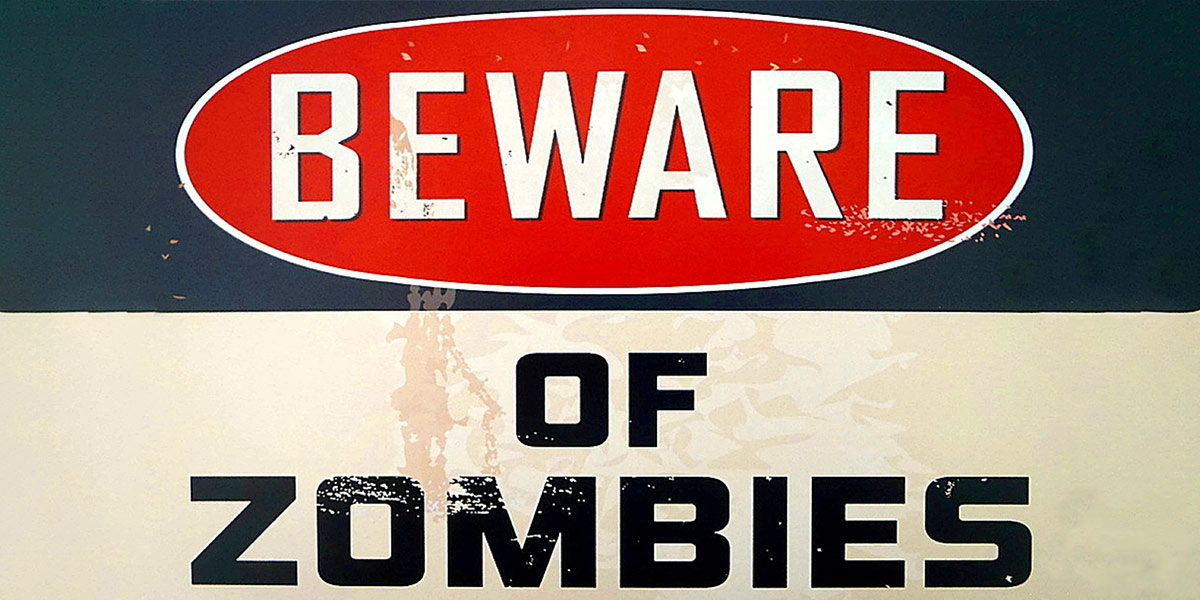As borrowing costs rise, more companies might start toppling over, warns David Coombs, our head of multi-asset investments.

The Walking Dead: Spoiler alert
The Walking Dead is still on its mid-season break. This is one of my guilty pleasures; watching Rick and his mates continue to decapitate zombies and go after the Saviours. I just cannot wait for Negan to get his comeuppance as bond yields start to rise along with tighter US monetary policy …
Wait, I’m getting a bit mixed up here. I’ve been on the road quite a lot over the last couple of weeks. Life really is imitating art in my head, but the point still stands – at least for companies like Carillion that have been living death for several years of ultra-cheap borrowing.
Since 2008, Western states have interfered significantly in the normal workings of capital markets. By embarking on truly epic quantitative easing programmes, with no historical precedent, governments and central banks have propped up many companies, allowing them to maintain their margins due to the artificially cheap cost of capital.
Businesses that might otherwise have failed in a normal cycle were able to shamble along like dead-eyed zombies. Many chief executives probably earned bonuses that were not totally justified, helped by booming markets and easy money. The rise of passive investing supported this too as capital just flowed indiscriminately into markets.
Still, perhaps we are approaching the turning point where capital markets start to act normal and zombie companies finally get decapitated (metaphorically speaking). Carillion could be an early example of this. The government has shown it is reluctant to bail out large employers in the UK and more importantly nor will banks continue to extend and pretend! The only outstanding Carillion bond (a convertible issue) is trading at 3p on the pound; it was roughly at par last year. While this is disastrous for employees and their pension scheme, Carillion’s collapse is a timely reminder of the risk/reward trade-off for investors.
I sense that equity markets are beginning to price risk more appropriately, hence the big increase in individual stock volatility. Those companies with greater visibility of future growth are outperforming, while those revealing disappointments suffer large double-digit intra-day falls. Unfortunately the same sanity doesn’t seem to have filtered into bond markets, where nominal yields aren’t compensating investors for the risk they are taking, let alone real yields. This is because interest rates remain very low, particularly in Europe where some shorter-dated bond yields are still negative. Even in the 10-year, most eurozone countries’ bonds yield much less than treasuries. Greece, fresh from its 2015 default, borrows at yields only 90 basis points higher than its US counterparts.
We are about to embark on an era of more judicious allocations of capital, which means more focused investment strategies are required. It will no longer be ok just buying everything in the market. It will be back to basic fundamentals: buy equity in businesses that have a clear growth trajectory, with excellent management demonstrating an ability to evolve and avoid complacency. I suspect remuneration of chief executives will be more deserved and come under more stringent review by institutional shareholders, encouraged by their own clients.
For now, bonds are difficult to invest in, but I suspect credit markets will see greater volatility over the next two years. It will be important to have sufficient liquidity in portfolios to take advantage, which is why I still hold a lot of cash that normally would be invested in bonds.
It pays to be patient and stick to the basics, even when you’ve lost your wife and your son has been bitten by a zombie. Sometimes that’s just what you’re paid to do. Wait …

